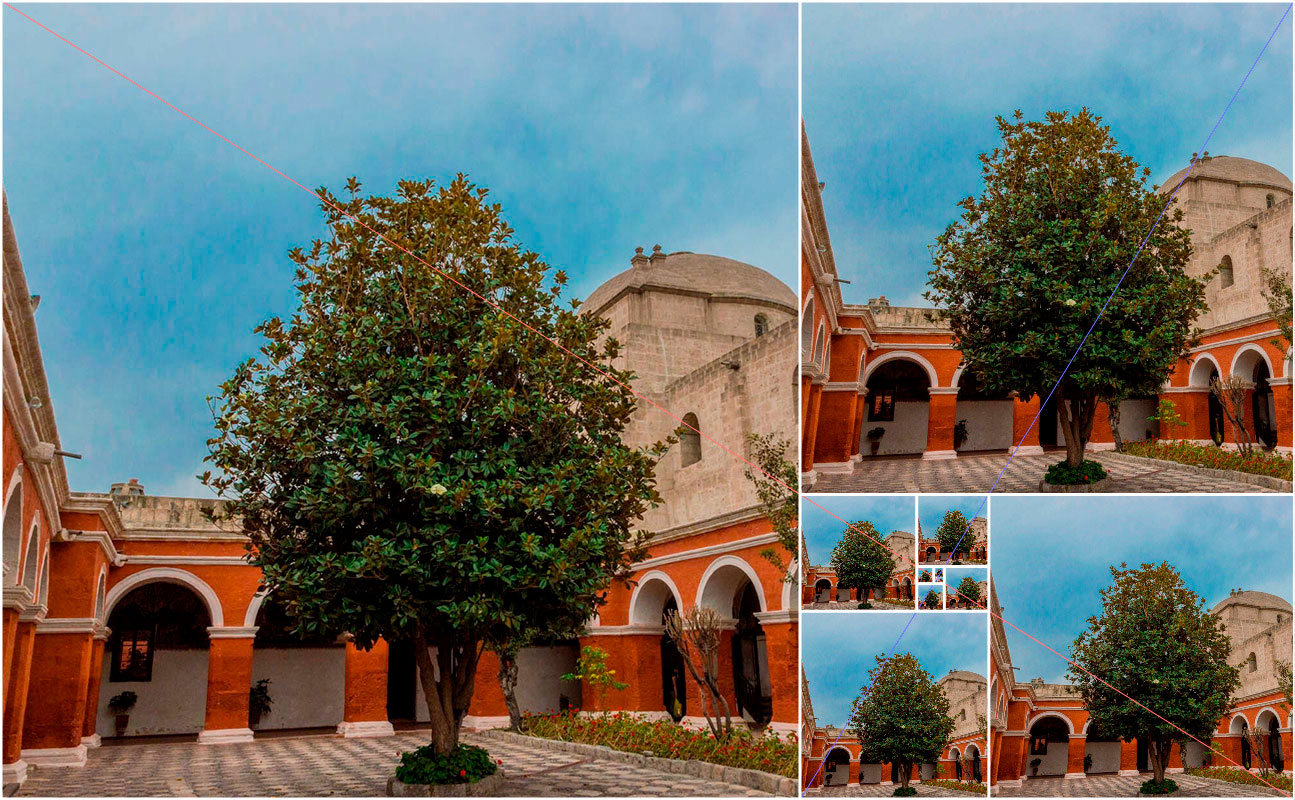Golden Rectangles with the Santa Catalina Monastery, Arequipa
The concept of successive golden rectangles forming a golden spiral can be creatively used to frame or enhance elements like the Santa Catalina Monastery. This application adds a unique and visually appealing dimension to the representation, possibly symbolizing balance, beauty, and a sense of artistic or divine proportion.

In Arequipa's heart,
Santa Catalina's charm,
Cloistered in time's grace,
Walls of color, secrets held,
A sacred space where souls dwell.
The Santa Catalina Monastery is a colonial monastic complex located in the historic center of Arequipa. The monastery was founded in the 16th century and is an example of Spanish colonial architecture. The monastery is a popular tourist destination and is considered a World Heritage Site by UNESCO.
The Golden Rectangles: Unveiling the Santa Catalina Monastery and the 'Eye of God'
A golden rectangle is a geometric figure characterized by side lengths adhering to the golden ratio, approximately 1:1.618. The generation of successive golden rectangles begins with an initial square. By annexing a square along one of its sides, a smaller golden rectangle is crafted. This iterative procedure is then repeated, yielding a cascading sequence of increasingly diminutive golden rectangles, each intimately linked to its predecessor. These rectangles, when adjoined sequentially, converge towards a singular vanishing point
- a mesmerizing optical phenomenon, often evocatively referred to as the "Eye of God."
The "Eye of God" is the point at which the diagonals of the first and second golden rectangles, specifically the diagonals connecting the opposite corners, intersect.
The reference to "the eye of God" may be metaphorical and open to interpretation. It could suggest that, within the context of the golden spiral and its harmonious proportions, the central or focal point, which may include the face of the Statue of Liberty, takes on a symbolic or profound meaning. The "eye of God" might represent a sense of divine symmetry or balance achieved through the application of mathematical and aesthetic principles.
Read more, explore further
-
Arequipa Main Square, Plaza de Armas and Golden Rectangles.
Search our site with Google: